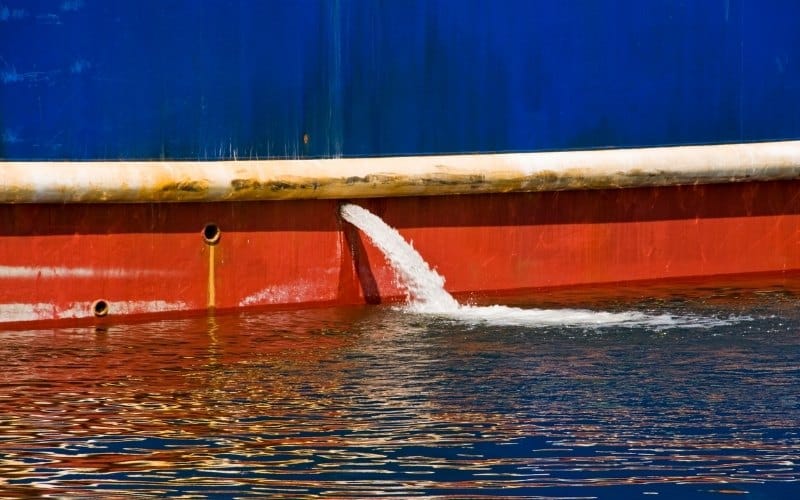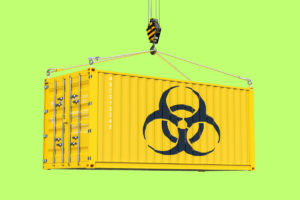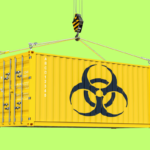10 Important Points to Comply With Ballast Water Convention
The International maritime organization (IMO) in 1997 adopted the guidelines for control and management of ship’s ballast water to minimize transfer of harmful aquatic organisms and pathogens from one sea area to another. Later, the Marine Environment Protection committee on February 2004 adopted the International Convention for the Control and Management of Ship’s Ballast Water and Sediments.
According to this convention all ships should carry and implement ballast water and sediments management plan, maintain ballast water record book and carry out ballasting and de ballasting operations in accordance with the convention.
Mentioned below are ten important points for complying with the ballast water convention:
1. General Methods For Managing Ballast Water Whose Source Is Anything Other Than The Deep Ocean Are As Follows:
1) Proceed to Port state approved offshore location to carry out exchange
2) Seal tank against discharge while in port waters
3) Pump water to a shore reception facility
4) Prove by Laboratory analysis that the ballast Water in safe and acceptable
5) Treat the Ballast in-Situ using an approved treatment method.
2. Important Points To Consider For Taking Ballast In Port
To the greatest extent possible, the ship should be slightly ballasted in port for departure using ballast tanks to allow for safe Navigation. The master should ensure that the ship takes on ballast water that is as clean as possible and care should be taken to minimize any sediment uptake. Taking on Ballast under the following circumstances should be avoided whenever possible:
1) In shallow water
2) In vicinity of sewage out-falls or dredging operations
3) Near, where there is a known outbreak of diseases communicable through ballast water
4) In areas with toxic phytoplankton blooms (harmful algae blooms such as Red tides)
5) At night when bottom- dwelling organisms may rise up in the water column
6) Where the incoming or outgoing tide is known to be turbid
7) Where tidal flushing is poor
3. Important Methods Of Ballast Water Exchange
Ballast water exchange operations are to be carried out in the deep water, open ocean as far as possible from the shore. The exchange should be conducted when the vessel is sailing in clean ocean water, which can be found more than 200 nautical miles from shore and in the water where the depth is 200 meters or more.
Currently three methods are exists and the sequential method is preferred.
Method 1:
Sequential method: The ballast tanks with water to be exchanged are emptied and refilled with clean ocean water in order to achieve at least a 95 percentage volumetric exchange. In this method the ballast tanks are emptied until the ballast pumps lose suction and then the tanks are further stripped by eductor systems.
Method 2
Flow-through method: A process by which replacement ballast water is pumped into a ballast, allowing the incoming water to overflow through the air vent or dedicated overflow vents. In practice, this means that at least three (3) tank volumes are to be pumped through each ballast tank to achieve 95% of efficiency of exchange.
Method 3
Dilution method: A process in which the replacement ballast water is filled through the top of ballast tank (e.g. Manhole) with simultaneous discharge from the bottom of the tank at the same rate, while maintaining a constant level in the tank during the operation.
4. Ballast Water Sampling Point
The sampling of ballast water may be required by the local authorities such as a Quarantine officer. Normal ballast water sampling may be done through the sounding pipe. Location of the sounding pipes’ heads are to be marked and should be shown on the vessel plan.
5. Sediment Management
Routine cleaning to remove sediments from tanks which are used to carry ballast should be regularly under taken:
1) Flushing with small quantity of clean water in an empty tank and de-ballasting it again
2) Manual cleaning by making an entry in to a ballast tank or tanks. The tank entry is an hazardous operation and safety procedures should be followed before entry. Inform port authority and “Enclosed space entry permit” to be made prior entry.
6. Chain Lockers and Sea Chests
Subjected to practical accessibility, all sources of sediment retention such as anchors, cables, chain lockers, suction wells should be cleaned out regularly as an additional precaution to further reduce the possibility of spreading contamination.
7. Disposal of Sediments
During cleaning and De-slitting operations, the tank sediments should be safely disposed of and should NOT be discharged in estuarine of coastal waters. Safe disposal consists of removal to shore facilities or designated landfill areas or discharge into deep ocean water in accordance with the convention.
8. Record Keeping
All the data of ballasting and De-ballasting operations, ballast water exchange etc. should be recorded with time and position in the ballast water record book .When sediment is cleaned from ballast tanks or chain lockers, this data should also be logged.
9. Ballast Water Management Officer
Usually, Chief Officer is the designated person for ballast water management. He must ensure that the procedures laid out in the ballast water management plan is implemented on board properly. It is important to plan and carry out ballasting and De-ballasting operation taking in to account the stability, trim factors of the vessel and advising other officers to carry out the operation safely. Prepare the ballast water declaration from prior to arrival in port. Assist port state control or quarantine officers for any sampling that may need to be taken. Maintain the Ballast water record book properly.
10. Crew Training and Familiarization
All officers and ratings should be trained and familiarized regarding ship’s pumping plan, positions of air and sounding pipes, location of tanks and manholes, compartment and tank suctions, pipe lines as well as remote pump operation and sounding equipment. Also all crew should be made aware of safety precautions and hazards involved. In addition, officers should be familiarized with record –keeping and approved stability booklet, and ballast water log should be cross checked everyday.
More researches are still under progress to enhance ballast water management and to eradicate the transfer of harmful aquatic organisms and pathogens, thus preventing change in marine environment and marine lives. Plans for making ships without ballast tanks are also underway which will further help in putting an end to pollution caused by ballast water.
Related Reading
How ballast water system works?
What is ballast water management plan?
Everything you ever wanted to know about ballast water exchange and management plan
What is ozone generator for ballast water treatment?
Over to you..
Do you know any important point that can be added to this list?
Let’s know in the comments below..
Do you have info to share with us ? Suggest a correction
Latest Maritime law Articles You Would Like:
Latest News
- What are Logistics Risks?
- How Port and Terminal Operators Can Control Emissions?
- Minimum Quantity Commitment (MQC) and Liquidated Damages in Container Shipping: Concept and Relevance
- MARPOL (The International Convention for Prevention of Marine Pollution For Ships): The Ultimate Guide
- The Ultimate Shipping Container Dimensions Guide
- A Comprehensive Overview of IMDG Code for Shipping Dangerous Goods
Subscribe To Our Newsletters
By subscribing, you agree to our Privacy Policy and may receive occasional deal communications; you can unsubscribe anytime.

















Hi,
I’ve been trying to find info on ballast water exchange but none of the documents I’ve read have been very helpful. My question is: If you conduct a ballast water exchange and take on ballast water, for example, 200nm from the UK and in 200m of water where are you permitted to discharge this water? Can you discharge it in a UK port or whilst at anchor off the UK coast? Please reference any relevant M-Notices or IMO publications where this information can be found!
thanks